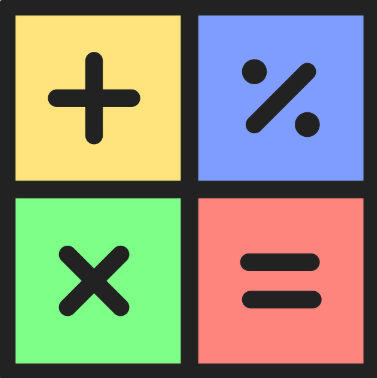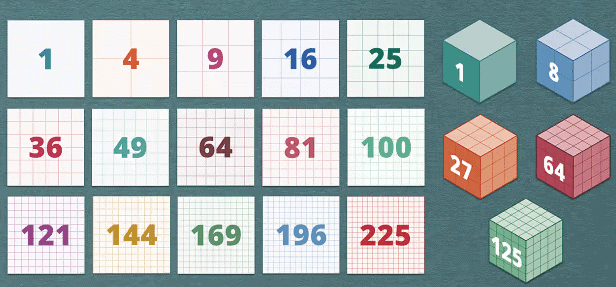Mathematical Operation | General Test Preparation for CUET UG - CUET Commerce PDF Download
| Table of contents |

|
| Introduction to Mathematical Operations |

|
| Types of Mathematical Operation Questions |

|
| Tips & Tricks to Solve Mathematical Operation Questions |

|
| Conclusion |

|
Introduction to Mathematical Operations
Mathematical Operations questions in the CUET UG exam assess logical reasoning and problem-solving abilities. These questions involve number manipulation, symbol replacement, and logical calculations to evaluate mathematical expressions. The primary focus is on understanding how mathematical symbols and numbers interact under different conditions.
Types of Mathematical Operation Questions
1. Symbol-Based Mathematical Operations
These questions involve replacing standard mathematical operators (e.g., +, -, ×, ÷) with different symbols and solving the expressions based on the given substitutions.
Example 1:
If ‘+’ means ‘×’, ‘-’ means ‘+’, ‘×’ means ‘÷’, and ‘÷’ means ‘-’, then solve: 18 × 6 + 3 ÷ 5 - 2 = ?
Solution: Replace the symbols according to the given rules:
- × is replaced by ÷
- + is replaced by ×
- ÷ is replaced by -
- - is replaced by +
So, the equation becomes:
18 ÷ 6 × 3 - 5 + 2 = 3 × 3 - 5 + 2 = 9 - 5 + 2 = 6
Answer: 6
2. Finding the Correct Equation
In these questions, a set of equations with modified operators is given, and students must determine which one is correct.
Example 2:
Which of the following is correct if ‘+’ means ‘-’, ‘-’ means ‘×’, and ‘×’ means ‘+’?
(A) 10 + 4 × 5 - 2 = 20
(B) 6 + 2 × 3 - 1 = 11
(C) 9 + 5 × 2 - 3 = 18
(D) 8 + 6 × 4 - 2 = 40
Solution:
Apply the given transformations and check each equation.
The correct answer is (B).
3. Swapping of Numbers
These questions involve interchanging numbers in an expression and solving accordingly.
Example 3:
If 3 and 5 are interchanged, 7 and 9 are interchanged, and addition is replaced with multiplication, then solve: 3 + 5 × 7 - 9 = ?
Solution:
After interchanging and replacing:
5 × 3 + 9 - 7 = 15 + 9 - 7 = 17
Answer: 17
4. Logical Number Arrangement in Equations
These questions involve applying a logical pattern to numbers instead of direct arithmetic operations.
Example 4:
If 8 # 4 = 24, 5 # 3 = 15, and 6 # 2 = 12, then what is 7 # 5?
Solution:
Pattern: A # B = A × B
Thus, 7 # 5 = 7 × 5 = 35
Answer: 35
5. Missing Operator Questions
These require finding the correct operator that balances an equation.
Example 5:
Which mathematical signs should replace * and ÷ to make the equation correct? 25 * 5 ÷ 10 = 20
(A) + and ×
(B) + and -
(C) ÷ and +
(D) - and ÷
Solution: After testing the options, the correct answer is (B) + and -.
6. Statement-Based Mathematical Operations
These questions involve mathematical operations described in words rather than symbols.
Example 6:
If a number is multiplied by 2 and then increased by 10, the result is 34. Find the number.
Solution:
Let the number be x. Equation: (x × 2) + 10 = 34
Solving: x × 2 = 24
x = 12
Answer: 12
7. Reverse Operations
These questions require working backwards from the result to determine the starting number.
Example 7:
A number is first doubled, then 6 is added, and finally, the result is divided by 3 to give 8. What is the original number?
Solution:
Let the number be x.
Equation: (2x + 6) ÷ 3 = 8
Solving: 2x + 6 = 24
2x = 18
x = 9
Answer: 9
8. Square and Cube Operations
These questions involve number squaring, cubing, or applying root operations.

Example 8:
Find the missing number: 4, 9, 16, ?, 36, 49
Solution:
Pattern: (1², 2², 3², 4², 5², ...)Missing number = 25 (5²)
Answer: 25
9. Letter Coding in Mathematical Operations
Numbers are replaced with letters, requiring logical deductions.
Example 9:
If A = 2, B = 4, C = 6, what is the value of A + B × C?
Solution:
A + B × C = 2 + 4 × 6 = 2 + 24 = 26
Answer: 26
10. Logical Comparisons in Mathematics
Questions involving ranking numbers based on mathematical operations.
Example 10:
Which is the largest? (A) 5² + 2³
(B) 6 × 5
(C) 3³ + 5
(D) 8 + 7 × 2
Solution:
Calculate each option: (A) 25 + 8 = 33
(B) 6 × 5 = 30
(C) 27 + 5 = 32
(D) 8 + 14 = 22
Largest: (A) 33
Answer: A
Tips & Tricks to Solve Mathematical Operation Questions
Understand the Pattern: Carefully read the instructions for symbol replacement or number swapping.
Write Down the Substitutions: When symbols are replaced, write down their original values to avoid confusion.
Use Elimination Technique: In multiple-choice questions, eliminate the incorrect options quickly.
Break the Question into Steps: Solve one operation at a time instead of attempting everything at once.
Check for Common Number Patterns: Many questions involve simple arithmetic patterns like squares, cubes, and multiples.
Practice Regularly: The more you practice, the faster you will recognize patterns and solve problems.
Conclusion
Mathematical Operations in CUET UG require logical thinking and pattern recognition. Mastering these concepts through practice will ensure high accuracy in solving these questions.
For further practice, solve more problems using these strategies to reinforce your understanding.
|
164 videos|800 docs|1157 tests
|
FAQs on Mathematical Operation - General Test Preparation for CUET UG - CUET Commerce
| 1. What are the basic types of mathematical operations? |  |
| 2. How can I improve my skills in solving mathematical operation questions? |  |
| 3. What are some common tips for solving complex mathematical operation problems? |  |
| 4. Are there any tricks to remember the order of operations in mathematics? |  |
| 5. How do mathematical operations apply in real-life situations? |  |




















